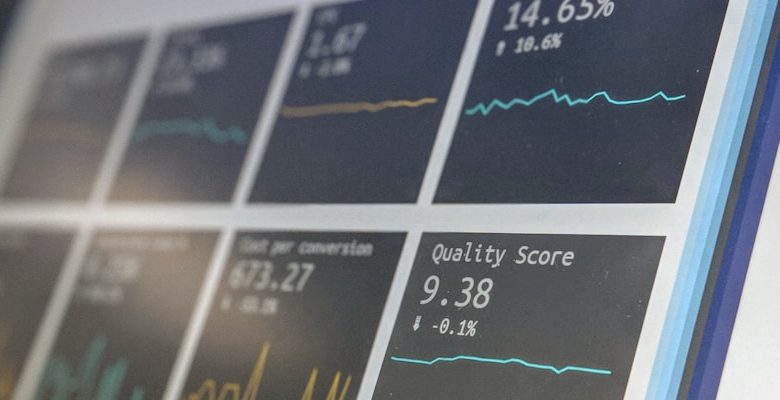The Role of Technical Analysis in Crypto Trading

- The Basics of Technical Analysis in Crypto Trading
- Common Technical Indicators Used in Crypto Trading
- Implementing Technical Analysis Strategies in Crypto Trading
- The Importance of Historical Price Data in Technical Analysis
- Using Technical Analysis to Predict Price Movements in Cryptocurrency
- The Risks and Limitations of Technical Analysis in Crypto Trading
The Basics of Technical Analysis in Crypto Trading
Technical analysis is a crucial tool for traders in the cryptocurrency market. It involves analyzing historical price data to forecast future price movements. By studying charts and patterns, traders can make informed decisions about when to buy or sell cryptocurrencies.
One of the key concepts in technical analysis is support and resistance levels. Support levels are price points where a cryptocurrency tends to find buying interest, preventing the price from falling further. Resistance levels, on the other hand, are price points where selling interest is high, preventing the price from rising further.
Another important aspect of technical analysis is trend analysis. Traders use trend lines to identify the direction in which a cryptocurrency’s price is moving. By following the trend, traders can capitalize on potential price movements and maximize their profits.
Technical analysis also involves the use of technical indicators, such as moving averages and relative strength index (RSI). These indicators help traders identify overbought or oversold conditions in the market, allowing them to make more informed trading decisions.
Common Technical Indicators Used in Crypto Trading
There are several common technical indicators used in crypto trading to help traders make informed decisions. These indicators are tools that analyze historical price data to predict future price movements in the cryptocurrency market.
One of the most widely used technical indicators is the Moving Average (MA), which helps traders identify trends by smoothing out price data over a specific period. The Relative Strength Index (RSI) is another popular indicator that measures the speed and change of price movements. The MACD (Moving Average Convergence Divergence) is used to identify changes in the strength, direction, momentum, and duration of a trend.
Other technical indicators commonly used in crypto trading include Bollinger Bands, Fibonacci Retracement, and Stochastic Oscillator. Bollinger Bands are used to measure volatility and identify overbought or oversold conditions. Fibonacci Retracement is based on the idea that markets will retrace a predictable portion of a move before continuing in the original direction. The Stochastic Oscillator compares a cryptocurrency’s closing price to its price range over a specific period.
Implementing Technical Analysis Strategies in Crypto Trading
When it comes to implementing technical analysis strategies in crypto trading, there are several key factors to consider. One of the most important aspects of technical analysis is the use of charts to identify patterns and trends in the price movement of a particular cryptocurrency. By analyzing these patterns, traders can make more informed decisions about when to buy or sell.
Another important aspect of technical analysis is the use of indicators to help identify potential entry and exit points. These indicators can range from simple moving averages to more complex tools like the Relative Strength Index (RSI) or the Moving Average Convergence Divergence (MACD). By understanding how these indicators work and how to interpret their signals, traders can improve their chances of making profitable trades.
It’s also essential to consider the timeframe over which you are analyzing the market. Some traders prefer to focus on short-term trends and fluctuations, while others take a longer-term view. By understanding the differences between these approaches and choosing the one that aligns best with your trading style, you can optimize your technical analysis strategy for better results.
The Importance of Historical Price Data in Technical Analysis
Historical price data plays a crucial role in technical analysis when it comes to trading cryptocurrencies. By analyzing past price movements, traders can gain valuable insights into potential future price trends. This data allows traders to identify patterns, trends, and key levels of support and resistance.
Understanding historical price data helps traders make more informed decisions when entering or exiting trades. By studying how prices have behaved in the past, traders can better predict how prices may move in the future. This information is essential for developing trading strategies and managing risk effectively.
Without historical price data, traders would be trading blindly, without any context or reference point. By analyzing past price data, traders can make more accurate predictions about future price movements, increasing their chances of success in the volatile cryptocurrency markets.
Using Technical Analysis to Predict Price Movements in Cryptocurrency
Technical analysis is a popular method used by traders to predict price movements in cryptocurrency markets. This approach involves analyzing historical price data, trading volume, and other market indicators to identify patterns and trends that may help forecast future price movements. By using technical analysis, traders can make informed decisions about when to buy or sell cryptocurrency assets.
One of the key principles of technical analysis is that price movements are not random but follow specific patterns that can be identified and analyzed. Traders use various tools and techniques, such as chart patterns, technical indicators, and trend lines, to analyze the market and make predictions about future price movements.
Chart patterns, such as head and shoulders, double tops, and flags, are visual representations of price movements that can help traders identify potential trend reversals or continuations. Technical indicators, such as moving averages, Relative Strength Index (RSI), and MACD, provide numerical data that can help traders confirm trends and make more accurate predictions.
Trend lines are used to identify the direction of the market trend and determine potential support and resistance levels. By drawing trend lines on a price chart, traders can visualize the overall market trend and make decisions about when to enter or exit a trade.
Overall, technical analysis can be a valuable tool for traders looking to predict price movements in cryptocurrency markets. By analyzing historical price data and market indicators, traders can gain insights into market trends and make more informed trading decisions.
The Risks and Limitations of Technical Analysis in Crypto Trading
While technical analysis can be a valuable tool in crypto trading, it is essential to be aware of the risks and limitations associated with it. One of the main drawbacks of relying solely on technical analysis is that it does not take into account external factors that can influence the market. For example, news events, regulatory changes, or market sentiment can all have a significant impact on the price of a cryptocurrency, but these factors are not reflected in technical analysis.
Additionally, technical analysis is based on historical data and patterns, which may not always accurately predict future price movements. The cryptocurrency market is known for its volatility, and sudden price fluctuations can occur without warning, making it challenging to rely solely on technical analysis to make trading decisions.
Another limitation of technical analysis in crypto trading is the potential for manipulation. The crypto market is still relatively young and unregulated, making it susceptible to price manipulation by large players or groups. These manipulations can distort technical indicators and make it difficult to accurately interpret price charts.
It is important for crypto traders to use technical analysis as part of a broader trading strategy that takes into account other factors such as fundamental analysis, market news, and risk management. By combining different analytical tools and approaches, traders can make more informed decisions and reduce their exposure to the risks associated with technical analysis alone.



